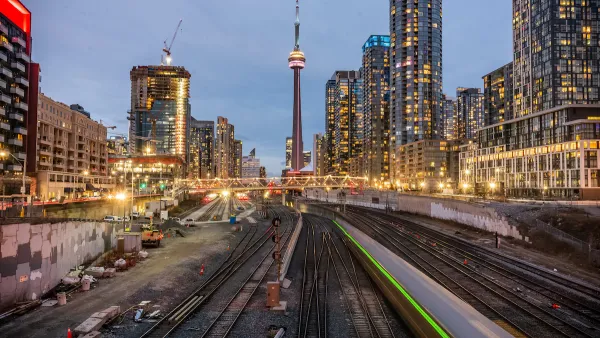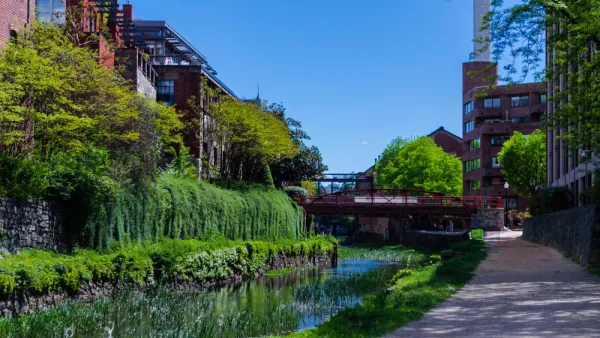Chuck Wolfe suggests we all have the inspiration within us to envision how to remake our cities--from the conjecture of a Seattle restauranteur about Seattle's monorail to neighborhood examples of "we used this before, let's use it again".
As part of a continuing series in Crosscut, Wolfe uses the foil of New York's High Line linear park to explain the role of vestiges of times gone by, beginning with a recent lunchtime suggestion by Seattle restauranteur Tom Douglas.
Douglas's suggestion? Abandon and green Seattle's monorail tracks--in the spirit of the High Line-- and provide walkable restaurant destinations along the way.
Drawing from landscape essayist J.B. Jackson, as well as his own book, Wolfe references the role of leftover structures in cities, and how, according to Jackson, they inspire us "to restore the world around us to something like its former beauty."
He notes other urban rails-to-trails examples--former land uses and infrastructure that have become, intentionally or otherwise, "eerily similar" to what transit and walkability advocates call for today. In merging former rail lines and current bike and pedestrian paths, these examples "illustrate firsthand Jackson's reasons for championing accessible, nostalgic vestiges of an urban past".
Wolfe concludes:
As Jackson noted, "Ruins provide the incentive for restoration, and for a return to origins." So too, they inspire Tom Douglas, and maybe you, to find your own "High Line.” Which is often just next door.
FULL STORY: Urban Ruins: Does Seattle need a High Line?

National Parks Layoffs Will Cause Communities to Lose Billions
Thousands of essential park workers were laid off this week, just before the busy spring break season.

Retro-silient?: America’s First “Eco-burb,” The Woodlands Turns 50
A master-planned community north of Houston offers lessons on green infrastructure and resilient design, but falls short of its founder’s lofty affordability and walkability goals.

Delivering for America Plan Will Downgrade Mail Service in at Least 49.5 Percent of Zip Codes
Republican and Democrat lawmakers criticize the plan for its disproportionate negative impact on rural communities.

Test News Post 1
This is a summary

Test News Headline 46
Test for the image on the front page.

Balancing Bombs and Butterflies: How the National Guard Protects a Rare Species
The National Guard at Fort Indiantown Gap uses GIS technology and land management strategies to balance military training with conservation efforts, ensuring the survival of the rare eastern regal fritillary butterfly.
Urban Design for Planners 1: Software Tools
This six-course series explores essential urban design concepts using open source software and equips planners with the tools they need to participate fully in the urban design process.
Planning for Universal Design
Learn the tools for implementing Universal Design in planning regulations.
EMC Planning Group, Inc.
Planetizen
Planetizen
Mpact (formerly Rail~Volution)
Great Falls Development Authority, Inc.
HUDs Office of Policy Development and Research
NYU Wagner Graduate School of Public Service




























